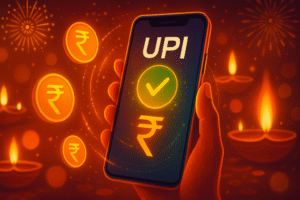Introduction
In today’s fast-paced digital landscape, real-time communication is no longer a luxury but a necessity. From ticket bookings and live updates to attendee interactions and notifications, event management systems require instant data exchange to enhance user experience. Traditionally, Polling was used to achieve near real-time updates, but WebSockets have revolutionized how modern applications handle bi-directional communication.
In this blog, we’ll explore WebSockets vs. Polling, compare their benefits and drawbacks, and analyze which one suits event management systems best.
What is Polling?
Polling is one of the oldest techniques used to simulate real-time communication. It works by:
- The client (browser/app) sending repeated requests to the server at fixed intervals.
- The server responding with either new data or a “no change” response.
Advantages of Polling
- Simple to implement.
- Works with almost any server setup.
- Easy to debug and test.
Disadvantages of Polling
- Inefficient use of resources (many unnecessary requests).
- Increased server load and bandwidth usage.
- Delayed updates (limited by the polling interval).
What are WebSockets?
WebSockets provide a full-duplex communication channel over a single TCP connection. Unlike HTTP requests, WebSockets allow both the client and server to send and receive messages in real time without repeatedly opening new connections.
Advantages of WebSockets
- True real-time communication with low latency.
- Efficient use of resources (no repeated requests).
- Scales better for applications with many active users.
- Supports advanced features like live chat, notifications, and interactive dashboards.
Disadvantages of WebSockets
- More complex to implement compared to polling.
- Requires proper load balancing and infrastructure support.
- May face compatibility issues in older systems.
WebSockets vs. Polling: A Side-by-Side Comparison
| Feature | Polling | WebSockets |
|---|---|---|
| Communication | Client repeatedly requests updates. | Persistent two-way connection. |
| Latency | Higher (depends on interval). | Very low (near real-time). |
| Resource Usage | High (many unnecessary requests). | Low (messages only when needed). |
| Scalability | Difficult with large user bases. | Scales well with proper setup. |
| Implementation | Simple, widely supported. | Requires more setup and infrastructure. |
Use Cases in Event Management Systems
- Polling Use Cases
- Small-scale events with limited real-time needs.
- Scenarios where occasional delays are acceptable (e.g., checking for updates every few minutes).
- Legacy systems without WebSocket support.
- WebSocket Use Cases
- Ticketing Systems: Real-time updates on ticket availability and reservations.
- Live Notifications: Instant alerts for schedule changes, cancellations, or announcements.
- Audience Engagement: Real-time polls, Q&A sessions, and interactive chat features.
- Event Dashboards: Real-time analytics on attendee check-ins, sales, and engagement.
Best Practices for Choosing Between WebSockets and Polling
- Start with requirements: If your event system demands real-time responsiveness, WebSockets are the clear choice.
- Hybrid approach: Some applications use long polling or combine polling for low-priority tasks with WebSockets for critical updates.
- Consider infrastructure: WebSockets may need better server and load balancing setups, while polling can work on simpler architectures.
Conclusion
Both WebSockets and Polling aim to provide real-time communication, but their approaches differ greatly. Polling is simpler and works for smaller, less demanding applications, while WebSockets deliver true real-time responsiveness essential for modern, large-scale event management systems.
When designing your system, the choice boils down to balancing complexity, infrastructure, and user experience requirements. For most modern event management platforms, WebSockets offer the scalability, speed, and efficiency needed to deliver seamless real-time interactions.







